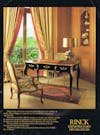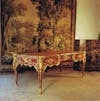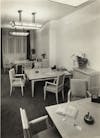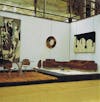In 2022, Rinck turns 181. Nearly two centuries of history that have seen an ever-increasing number of projects. It goes without saying that the company has designed and produced an incalculable number of desks during this time. Let’s look at just of few of them, those that are perhaps the most emblematic. Before we begin, though, an observation: After diving into our archives for the purposes of this article, it became clear that custom-made desks could be divided into two categories. First, power desks designed for ministers, presidents, chairpersons, or other public decision-makers. These are frequently in the Louis XV, Louis XVI, or Empire style, as if our politicians needed to maintain a foothold in France’s fortitude. Then, at the other end of the spectrum, desks related to economic activity. Uncluttered, streamlined desks, often modernist or at least in keeping with the times.











